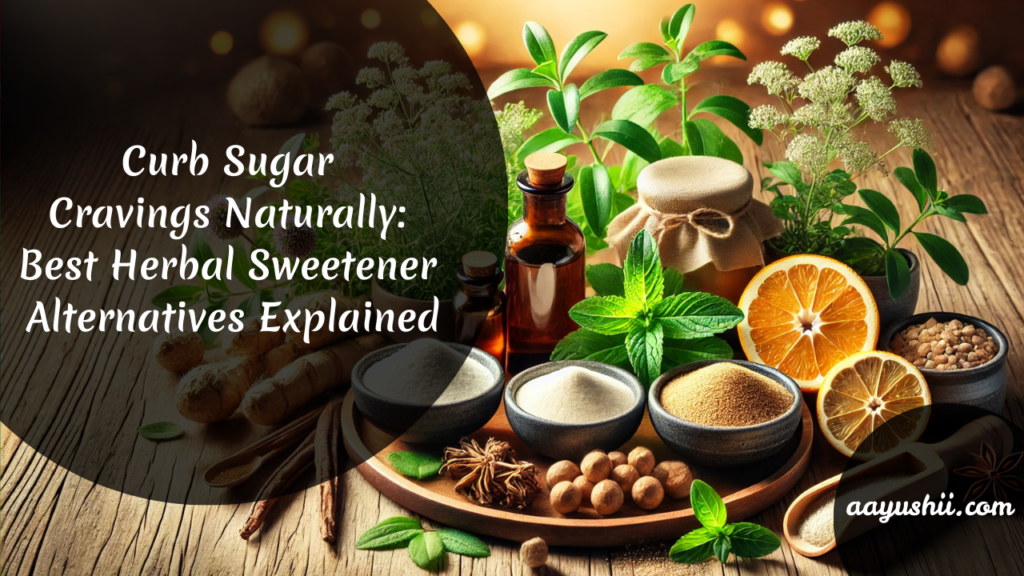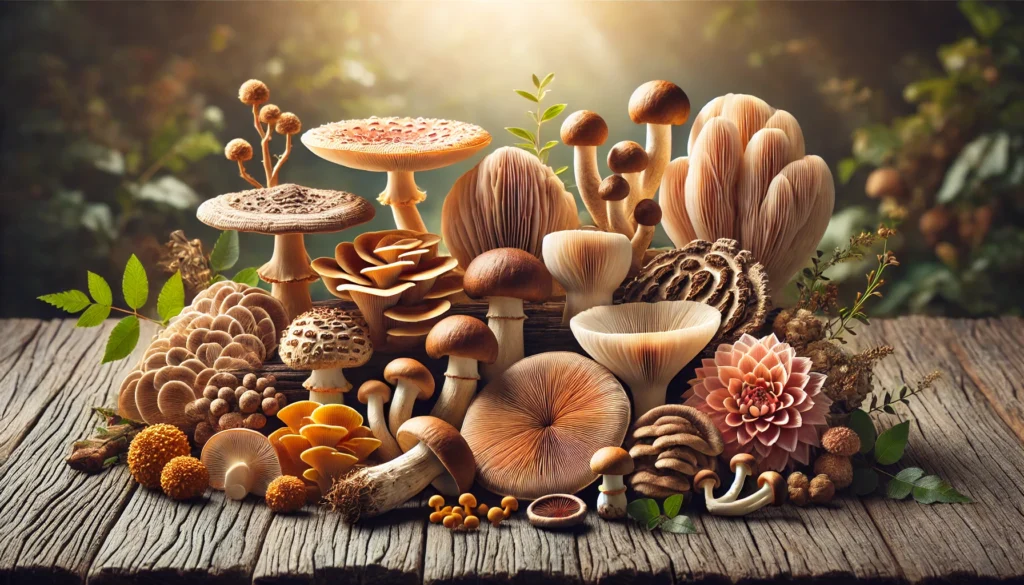Sugar cravings can strike at any moment—whether it’s that mid-afternoon slump at work or a late-night urge for something sweet. For many, these cravings aren’t just occasional temptations; they can be an ongoing battle that affects energy levels, mood, and overall health. The usual solution? Reaching for refined sugars or artificial sweeteners. But these come with a host of negative effects, from blood sugar spikes to long-term health risks.
Thankfully, nature provides a better alternative. Herbal sweeteners offer a way to satisfy your sweet tooth without the downsides of processed sugar. These plant-based options not only deliver sweetness but also come with unique health benefits that support balanced blood sugar, improved digestion, and even weight management.
In this in-depth guide, we’ll dive into why sugar cravings happen, the risks of excessive sugar intake, and how herbal sweeteners can be a game-changer. We’ll explore some of the best natural alternatives—like stevia, monk fruit, licorice root, yacon syrup, and more—covering their history, benefits, potential side effects, and how to use them effectively. If you’re looking for a natural way to curb sugar cravings and make healthier choices, you’re in the right place. Let’s get started!
Understanding Sugar Cravings

Sugar cravings are very common, and understanding their root causes can be the first step in overcoming them. Here, we take a closer look at how sugar cravings develop, why they can be so persistent, and the impact refined sugar can have on our bodies.
What Are Sugar Cravings?
A sugar craving is an intense desire or urge to consume something sweet. This craving often emerges in the presence of sweets, such as cookies, candy, chocolate, sugary drinks, or even fruits. While occasional sugar cravings are normal, persistent and intense sugar cravings can lead to excessive sugar consumption, creating a cycle that is difficult to break.
Key Points:
- Sugar cravings are common experiences that can arise from both physiological and psychological factors.
- They can become problematic if they lead to overconsumption of sugary foods, potentially contributing to health issues.
- Recognizing when a sugar craving is genuine hunger or emotional/psychological dependence is crucial.
Why Do We Crave sugar?
The human body is hardwired to favor sweet flavors. Our ancestors depended on quick energy sources, often in the form of naturally sweet foods like fruits and honey. Over time, sugar became more readily available in processed forms. The reasons for sugar cravings include:
- Blood Sugar Fluctuations: When our blood sugar levels drop, our body signals the brain to seek quick energy, typically from sugary or carbohydrate-rich foods.
- Dopamine Release: Sugar consumption triggers the release of dopamine, a “feel-good” neurotransmitter, which the brain can learn to crave repeatedly.
- Emotional Factors: Stress, anxiety, boredom, or sadness can drive people to look for comfort in sweet foods, creating a habit loop that ties sugar intake to emotional relief.
- Nutrient Deficiencies: An imbalanced diet lacking in protein or healthy fats can exacerbate sugar cravings, as the body may be hungry for nutrients and default to sugar.
The Impact of Refined Sugar on Health
Refined sugar often has a detrimental effect on our health when consumed in excess. High sugar intake has been linked to:
- Weight Gain and Obesity: Excess calories from sugar can contribute to weight gain, increasing the risk of obesity.
- Blood Sugar Spikes: Refined sugar can cause sudden blood sugar fluctuations, which may increase the risk of insulin resistance and type 2 diabetes if continued long-term.
- Increased Risk of Heart Disease: A high-sugar diet can negatively affect lipid profiles and blood pressure, raising the risk of heart disease.
- Dental Problems: Sugar is the primary culprit behind tooth decay and cavities, as it fuels harmful bacteria in the mouth.
- Inflammation: Excessive sugar consumption can contribute to chronic inflammation, potentially impacting overall well-being and exacerbating conditions like arthritis.
Why Consider Herbal Sweeteners?

Reducing sugar intake is often one of the first dietary adjustments recommended by health professionals. However, many people struggle to reduce or eliminate sugar entirely due to the deeply ingrained habit of sweet flavors. This is where herbal sweeteners come in.
The Problem with Refined Sugar
Refined sugar is stripped of most nutrients and is considered “empty calories,” providing energy but no vitamins, minerals, or fiber. It quickly enters the bloodstream, causing blood sugar spikes, followed by crashes that can leave us feeling fatigued and craving more sugar. This cycle can lead to chronic overconsumption and various health issues, as noted above.
Concerns Around Artificial Sweeteners
When looking for sugar substitutes, many people switch to artificial sweeteners (like aspartame, sucralose, or saccharin). While these sweeteners do provide sweetness without the same caloric impact as sugar, they come with potential drawbacks:
- Possible Impact on Gut Health: Some studies suggest certain artificial sweeteners might disrupt gut microbiota balance.
- Chemical Aftertaste: Many people dislike the bitter or metallic aftertaste associated with some artificial sweeteners.
- Mixed Research: Though deemed generally safe by regulatory bodies, conflicting studies about the long-term impact of artificial sweeteners still cause debate.
Herbal Sweeteners as Natural Alternatives
Herbal sweeteners usually come from plant sources and tend to be more natural than many artificial options. Examples include stevia, monk fruit, and licorice root. These sweeteners often have minimal caloric impact, making them suitable for individuals monitoring caloric intake, blood sugar levels, or pursuing a healthier lifestyle.
Key Advantages of Herbal Sweeteners:
- Plant-Derived: Many herbal sweeteners are derived from the leaves, fruits, or roots of plants, making them closer to whole foods.
- Minimal Effect on Blood Sugar: Most herbal sweeteners have a low glycemic index, meaning they do not cause steep blood sugar spikes.
- Unique Health Benefits: Some, like licorice root, have demonstrated anti-inflammatory or digestive benefits beyond just sweetness.
Top Herbal Sweeteners for Curbing Sugar Cravings
In this section, we will detail some of the most popular herbal sweeteners, including their histories, health benefits, how to use them, and any precautions to keep in mind.
Stevia
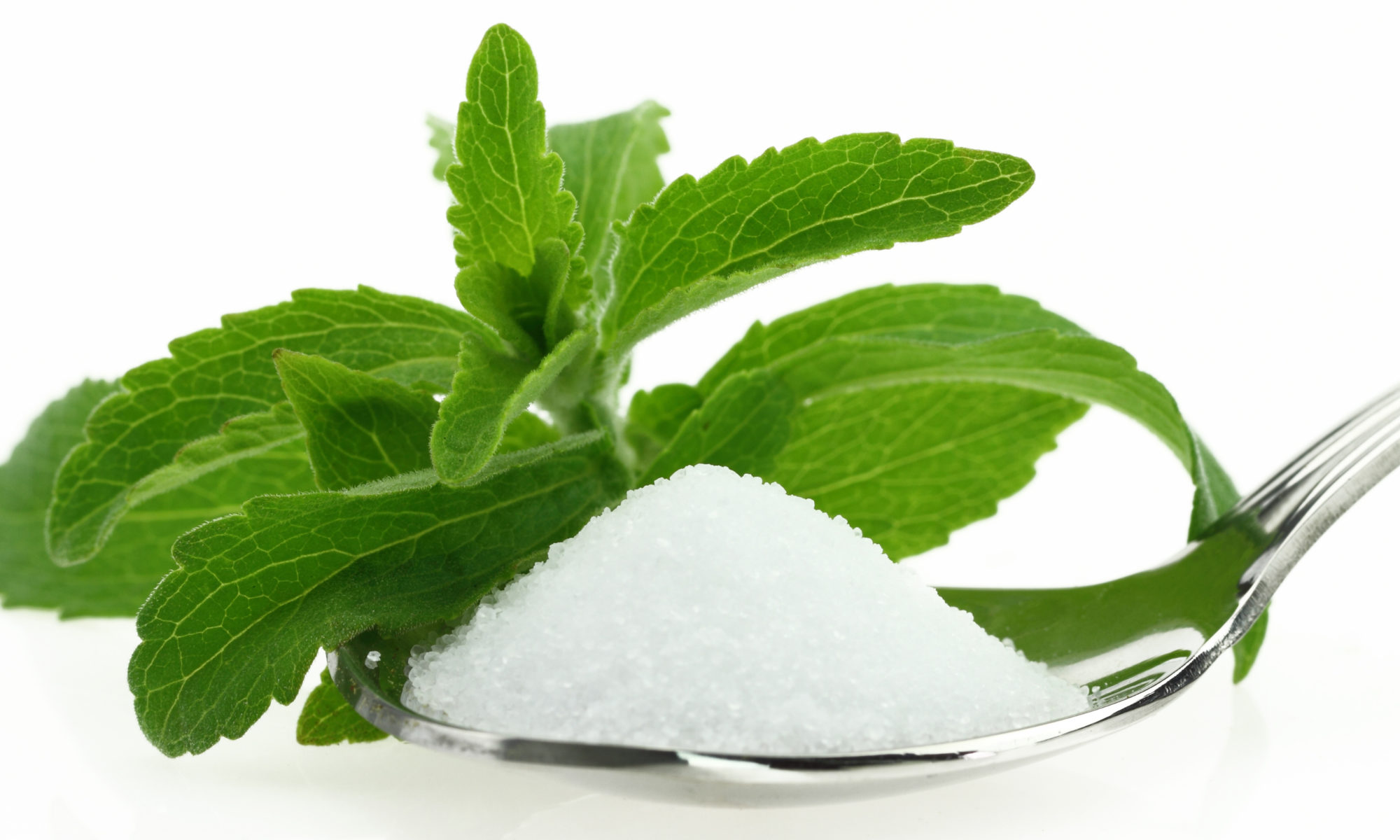
Stevia is probably the most well-known herbal sweetener on the market today. It has gained popularity worldwide for its intense sweetness and negligible caloric impact.
History and Origin (Stevia)
Stevia rebaudiana is a plant native to parts of South America, particularly Paraguay and Brazil. Indigenous tribes have used its leaves for centuries to sweeten herbal teas and traditional medicines. Stevia’s sweet taste is primarily due to compounds called steviol glycosides, which are extracted from the leaves.
Health Benefits (Stevia)
- Zero-Calorie Sweetener: Stevia contains virtually zero calories, making it an excellent choice for those monitoring caloric intake.
- Low Glycemic Impact: Stevia has minimal effect on blood sugar levels, which can help those with insulin resistance or type 2 diabetes looking for a sweet fix without spikes.
- Antioxidant Properties: Some research suggests stevia may possess antioxidant properties and potential benefits for heart health.
How to Use Stevia
Stevia comes in multiple forms: powdered extract, liquid extract, and whole or crushed leaves. Here are some tips for each form:
- Powdered Extract: Highly concentrated. Often used in baking or sweetening drinks. A pinch can be enough to sweeten a cup of tea or coffee.
- Liquid Extract: Convenient for adding drops to beverages, smoothies, or sauces.
- Whole/Crushed Leaves: Used in brewing teas or homemade infusions. The sweetness can be milder than processed forms.
Example: If a recipe calls for one cup of sugar, you might need just 1 to 2 teaspoons of a powdered stevia extract. However, conversion charts vary by brand, so it’s essential to consult product guidelines or experiment in the kitchen.
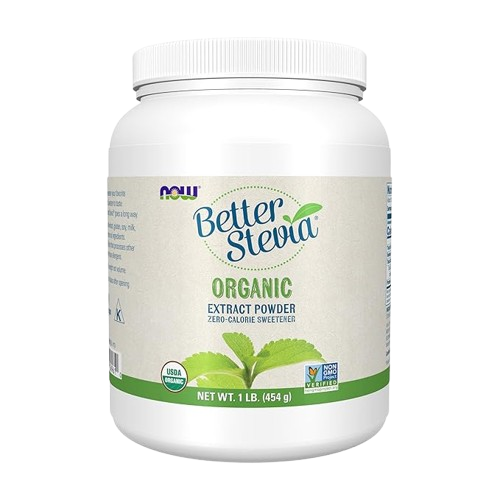
Potential Side Effects (Stevia)
- Some individuals may detect a bitter or licorice-like aftertaste.
- Overconsumption can sometimes lead to bloating or digestive discomfort.
- High-purity stevia is generally recognized as safe (GRAS) by regulatory authorities, but it is wise to buy stevia products from reputable brands to avoid additives or fillers.
Monk Fruit (Luo Han Guo)
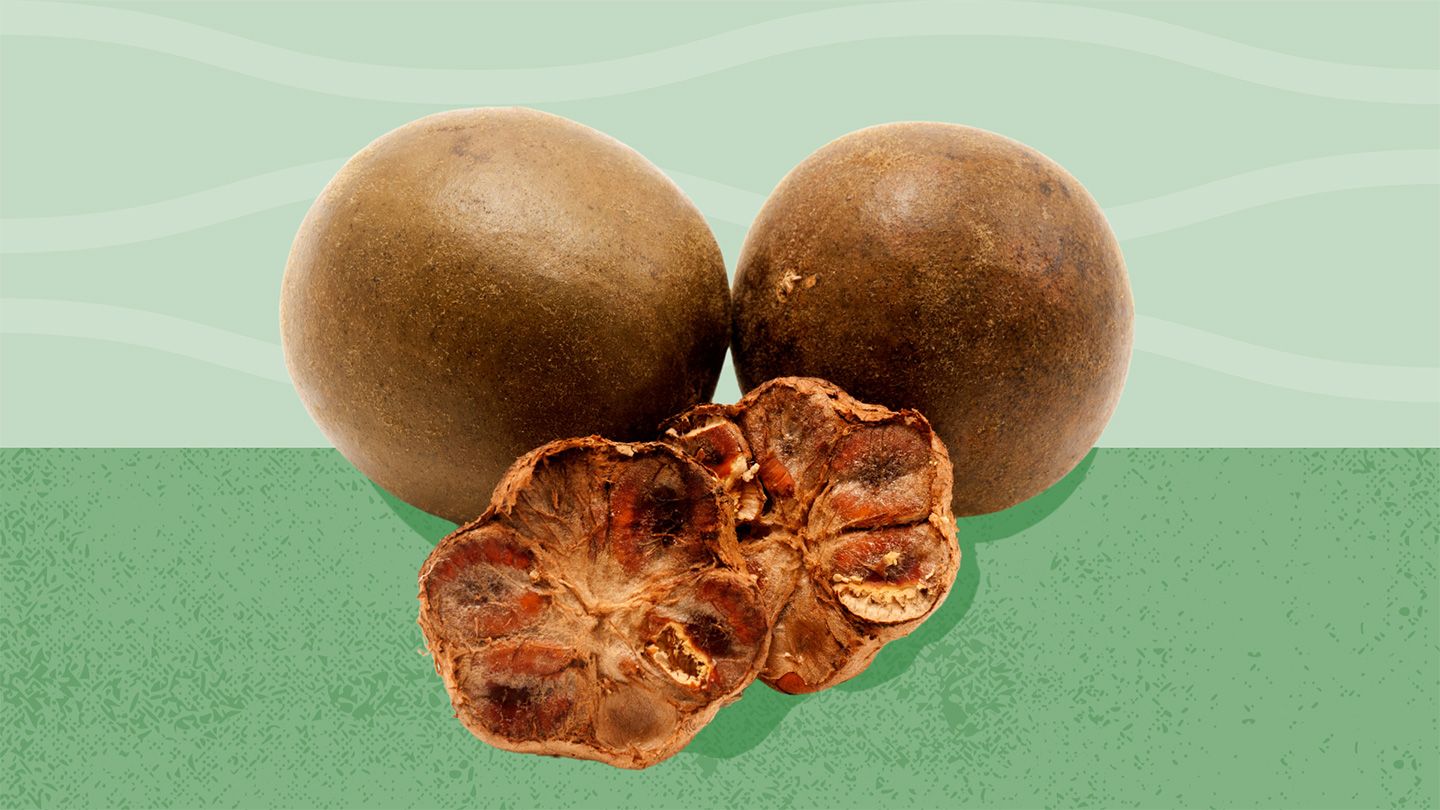
Monk fruit, also known by its Chinese name Luo Han Guo, is another popular herbal sweetener that has recently gained traction outside of Asia.
History and Origin (Monk Fruit)
Monk fruit comes from the Siraitia grosvenorii plant, native to Southern China. It is named after the monks who first cultivated it centuries ago. Traditional Chinese medicine has utilized monk fruit not only as a sweetener but also for its purported anti-inflammatory and throat-soothing properties.
Health Benefits (Monk Fruit)
- Calorie-Free Sweetness: The sweetness of monk fruit is primarily due to antioxidants called mogrosides, which can taste up to 200-300 times sweeter than sugar.
- Low Glycemic Index: Like stevia, monk fruit sweetener does not significantly affect blood sugar, making it a suitable option for individuals with diabetes or on low-carb diets.
- Antioxidants: The mogrosides in monk fruit have antioxidant properties, which may help combat oxidative stress.
How to Use Monk Fruit
Monk fruit sweeteners are often found in powdered or liquid form. You can add these to:
- Beverages: Coffee, tea, smoothies, or lemonade.
- Baked Goods: Cakes, cookies, brownies, where you would usually use sugar.
- Sauces and Dressings: Barbecue sauces or salad dressings that need a hint of sweetness.
Be mindful of conversion ratios, as monk fruit can be much sweeter than regular sugar. Some brands blend monk fruit with erythritol or other fillers to reduce its intense sweetness and mimic sugar volume.
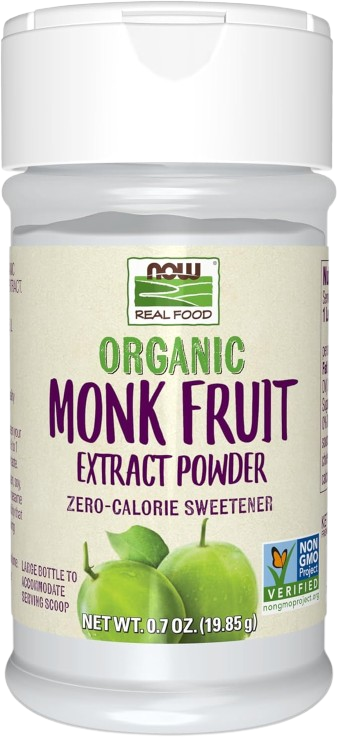
Possible Drawbacks (Monk Fruit)
- Availability and Cost: Monk fruit sweeteners can be more expensive than stevia or refined sugar, and not all grocery stores carry them.
- Taste Profile: While many find monk fruit tastes closer to sugar compared to stevia, some may still detect a slight aftertaste.
Licorice Root
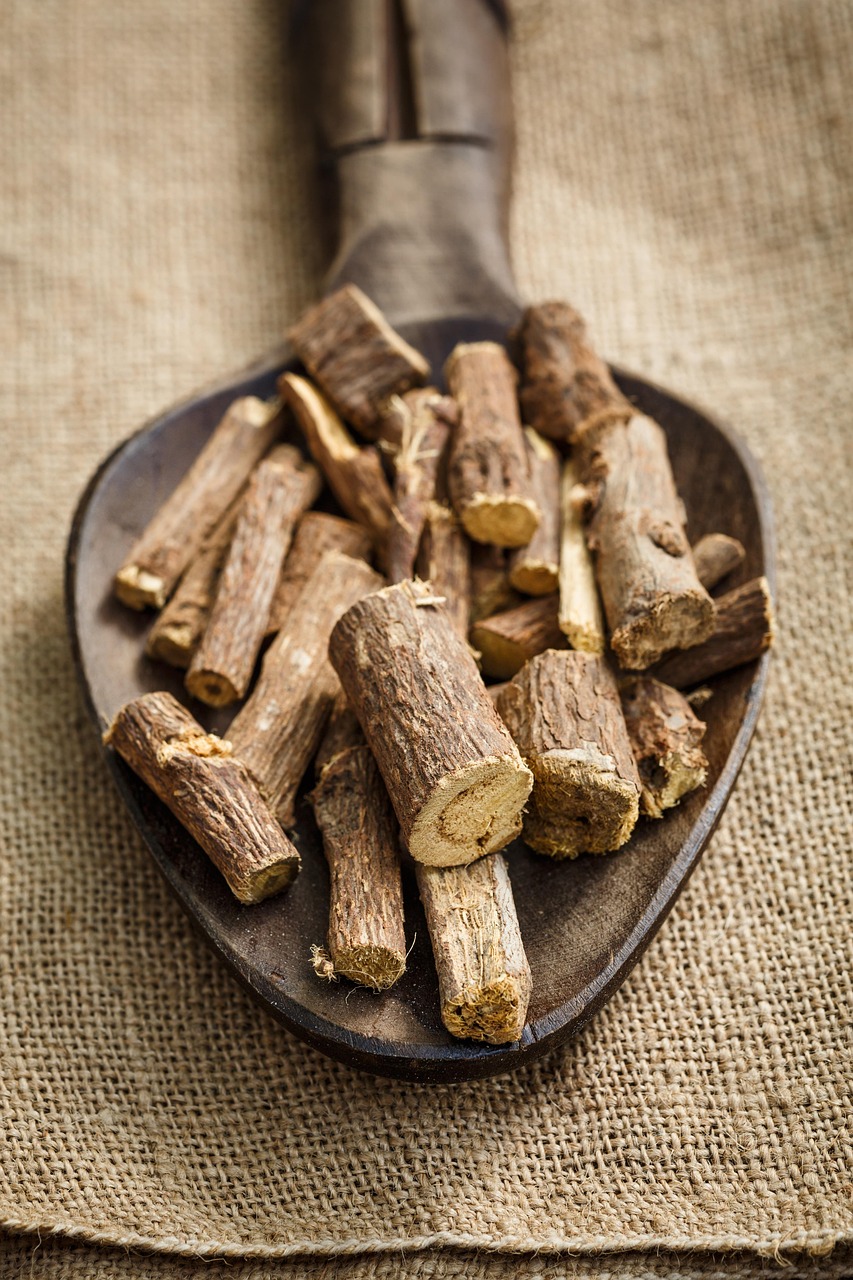
Licorice root is not just a candy flavor; it can also serve as a natural sweetener when used correctly. However, licorice root has more considerations and potential side effects than many other herbal sweeteners.
History and Origin (Licorice Root)
The use of licorice root (from the Glycyrrhiza glabra plant) can be traced back thousands of years in both Chinese and Middle Eastern medicine. It has been used to soothe gastrointestinal discomfort, reduce inflammation, and sweeten herbal preparations.
Health Benefits (Licorice Root)
- Digestive Aid: Licorice root is traditionally used to help with acid reflux, gastric ulcers, and general gut health.
- Anti-Inflammatory Properties: Some studies suggest that licorice may have anti-inflammatory effects.
- Stress Support: Licorice root is considered an adaptogen in herbal medicine, potentially helping the body adapt to stress.
Forms of Licorice Root
- Whole Root: Often used in teas or decoctions.
- Powdered Form: Can be added to teas, smoothies, or herbal capsules.
- Extracts: Available in liquid or capsule form and can be combined with other herbal blends.
Tip: While licorice root is sweet, it also has a distinctive licorice flavor. If you enjoy that flavor profile, you can use licorice root to sweeten herbal teas or certain desserts (like licorice-flavored cookies). However, if you are not fond of that taste, other herbal sweeteners may be preferable.
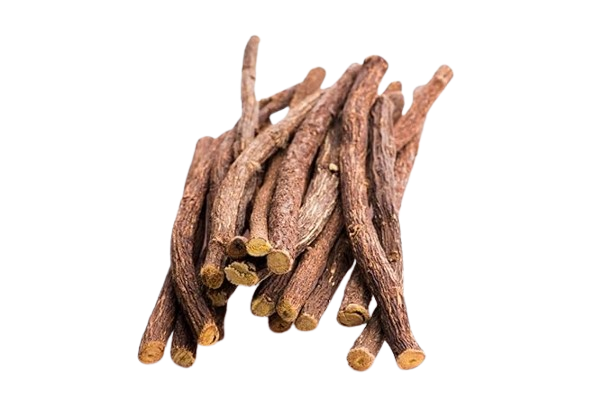
Safety and Precautions (Licorice Root)
- Glycyrrhizin Content: The compound glycyrrhizin in licorice root can lead to elevated blood pressure, low potassium levels, and other health concerns if consumed in excessive amounts.
- DGL (Deglycyrrhizinated Licorice): This form of licorice root has most of the glycyrrhizin removed, reducing the risk of side effects. However, DGL is less sweet and is typically used for digestive support rather than as a sweetener.
- Consult Healthcare Providers: Individuals with hypertension, kidney issues, or those on certain medications should be cautious and consult a healthcare professional before consuming licorice root regularly.
Yacon Syrup
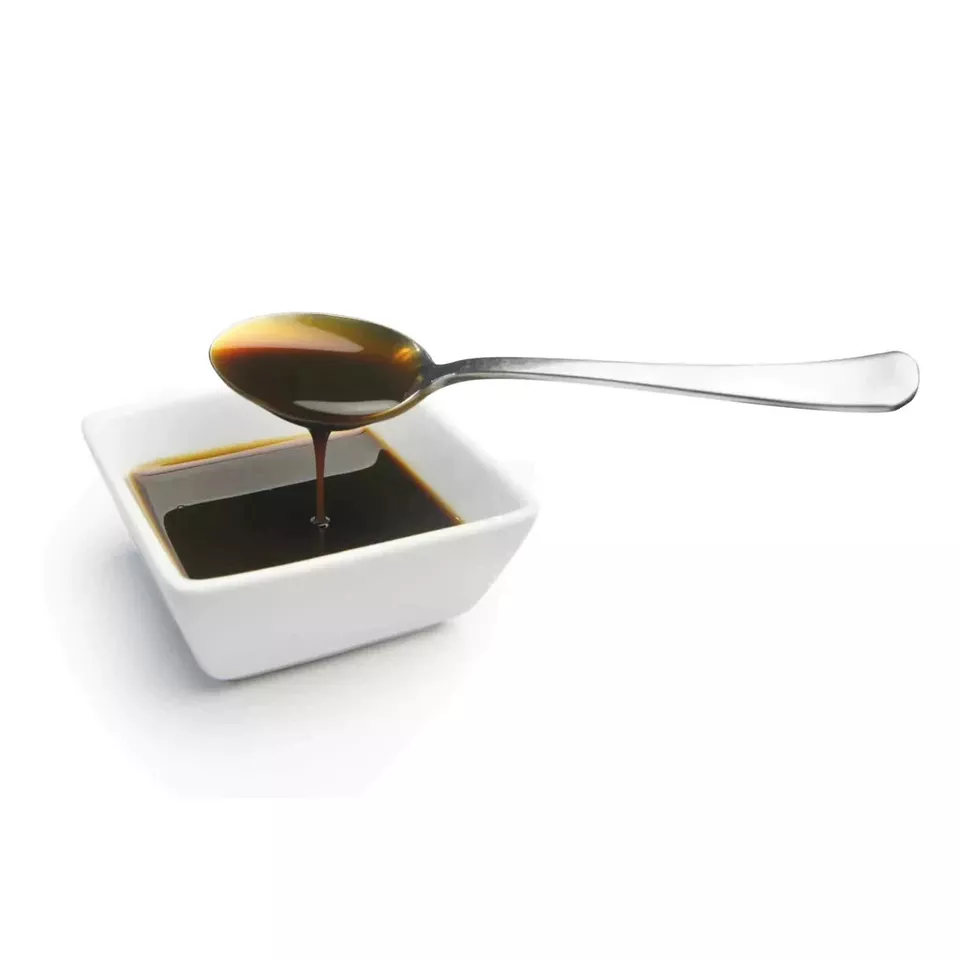
Yacon syrup has been touted as a sweetener with potential benefits for weight management and gut health. It offers a unique flavor, somewhat similar to molasses or caramel.
What is Yacon?
Yacon (Smallanthus sonchifolius) is a tuberous plant native to the Andes Mountains in South America. Its roots are rich in fructooligosaccharides (FOS), a type of prebiotic fiber that the human body does not fully digest, resulting in fewer absorbable calories.
Nutritional Profile (Yacon)
- Low Caloric Content: Because much of the carbohydrate content is in the form of non-digestible FOS, yacon syrup is relatively low in calories.
- Prebiotic Effects: FOS can promote the growth of beneficial bacteria in the gut, potentially aiding digestion and overall gut health.
Health Benefits (Yacon)
- Potential Weight Management Aid: Some studies suggest that yacon syrup may help with weight management by promoting satiety due to its fiber content.
- Blood Sugar Regulation: While not entirely sugar-free, yacon syrup has a lower glycemic impact than table sugar.
- Digestive Health: The prebiotic nature of FOS can support a healthy gut microbiome, which is linked to multiple aspects of health.
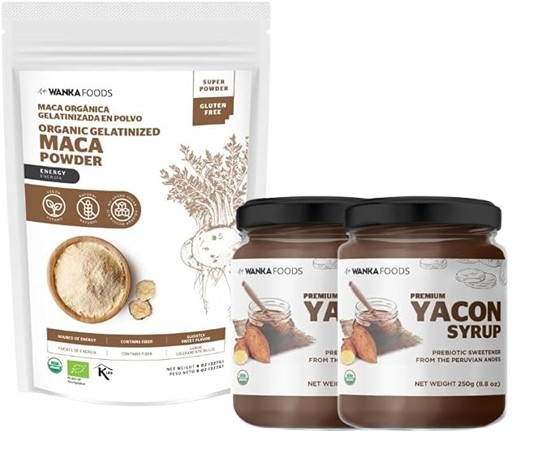
How to Use and Store Yacon Syrup
- Usage: Use yacon syrup as you would honey or molasses: drizzled on oatmeal, pancakes, or in salad dressings.
- Cooking: Yacon syrup can brown quickly if exposed to high heat, so it might be better suited for low-temperature recipes or as a finishing drizzle.
- Storage: Keep it in a cool, dark place. Refrigeration is not always necessary, but read the product label for guidance.
Other Plant-Derived Sweeteners (Erythritol, Coconut Sugar, and More)
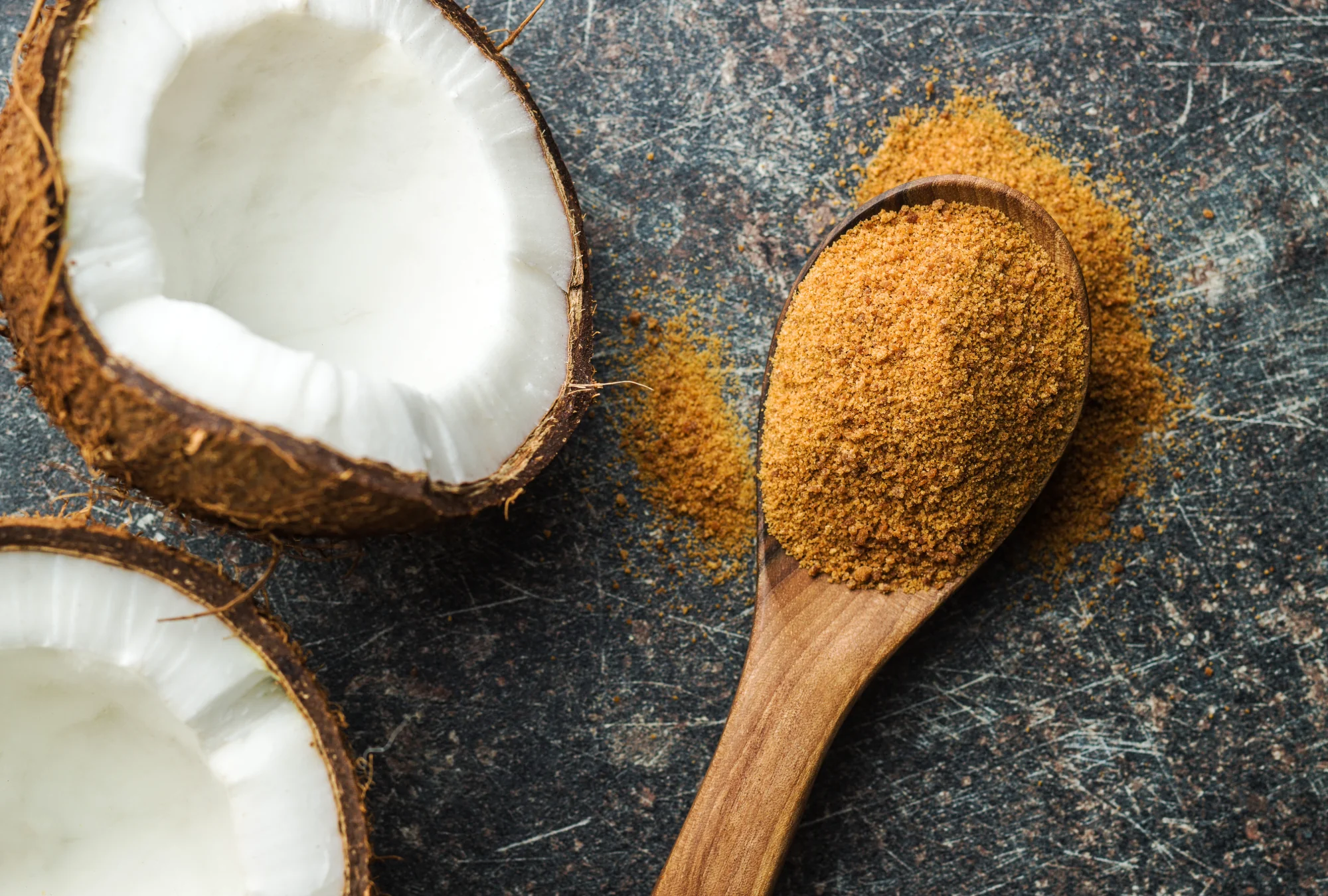
While not strictly “herbal,” several other plant-based sweeteners are worth mentioning:
- Erythritol: A sugar alcohol derived from plant sugars, often used in conjunction with stevia or monk fruit to balance sweetness. It has almost zero net carbs and a very low impact on blood sugar.
- Coconut Sugar: Made from the sap of coconut palm trees, it contains some nutrients like iron, zinc, and calcium, but it still contains fructose and has a glycemic index somewhat lower than table sugar but not as low as stevia or monk fruit.
- Maple Syrup: Derived from the sap of maple trees, it contains antioxidants and some minerals. However, it is still high in sugar and calories, so use moderation.

How Herbal Sweeteners Can Help Manage Sugar Cravings

Herbal sweeteners can be a useful tool for those looking to cut back on refined sugar. By providing sweetness without heavily impacting blood glucose or adding large amounts of empty calories, herbal sweeteners can help reduce overall sugar consumption.
Glycemic Impact
Most herbal sweeteners (stevia, monk fruit, etc.) have negligible effects on blood sugar levels. By replacing sugar with low-glycemic sweeteners, you can:
- Stabilize energy levels.
- Avoid abrupt sugar crashes.
- Potentially reduce the risk of insulin resistance over time.
Satiety and Digestion
Some herbal sweeteners (like yacon syrup) contain prebiotic fibers that may help with satiety, making you feel full sooner. This can naturally curb excessive snacking or cravings for more sweets.
Taste and Flavor Satisfaction
The key to breaking sugar dependency is often psychological. If you can satisfy your sweet tooth without fueling the addiction cycle caused by refined sugar, you may find it easier to gradually reduce sweetener use altogether. Herbal sweeteners provide a sweet taste that can help transition away from refined sugar while still enjoying desserts and sweetened beverages.
Holistic Strategies to Curb Sugar Cravings Naturally

While herbal sweeteners can be extremely helpful, there are additional strategies and lifestyle tweaks that can further curb sugar cravings. A holistic approach addresses the root causes of cravings—whether they are physiological, psychological, or both.
Balanced Diet and Meal Timing
- Prioritize Protein and Healthy Fats: Consuming adequate protein and healthy fats (e.g., from avocados, nuts, seeds, and fish) can stabilize blood sugar and reduce cravings.
- Complex Carbohydrates: Whole grains, legumes, and vegetables provide steady energy release, helping to avoid sugar spikes and crashes.
- Regular Meal Intervals: Eating smaller, balanced meals and snacks every 3-4 hours may help prevent drastic drops in blood sugar, which can trigger sugar cravings.
Staying Hydrated
Sometimes, sugar cravings are actually a sign of dehydration. Drinking enough water throughout the day can help:
- Reduce perceived hunger.
- Support metabolism and digestion.
- Maintain stable energy levels, reducing the urge for sugary pick-me-ups.
Mindful Eating and Stress Management
- Identify Emotional Triggers: Notice if sugar cravings spike during stress, sadness, or boredom. Addressing emotional triggers can help break the habit of stress-eating sugar.
- Mindful Eating Techniques: Slow down during meals, savor flavors, and listen to hunger cues. This can reduce the need for overeating or constant snacking.
- Stress Reduction: Techniques like meditation, yoga, journaling, or deep breathing can help manage stress, cutting back on emotional sugar cravings.
Herbal Teas and Supplements
Drinking certain herbal teas (like cinnamon tea, peppermint tea, or licorice root tea in moderation) can help curb sugar cravings by providing a subtle sweetness or aromatic satisfaction without added sugar. Some supplements, such as chromium or gymnema sylvestre, are also believed to help regulate blood sugar and reduce cravings. Always consult a healthcare provider before starting any new supplement.
Regular Physical Activity
Exercise plays a vital role in regulating metabolism and improving insulin sensitivity. Regular workouts—whether cardio, strength training, or even walks—can help:
- Stabilize blood glucose levels.
- Improve mood and reduce stress.
- Increase overall energy, reducing the urge for sugary foods.
Practical Tips and Recipes for Using Herbal Sweeteners

Switching from refined sugar to herbal sweeteners may require a learning curve, particularly in cooking and baking. Below are some practical tips and straightforward recipes to kickstart your journey toward healthier sweetening options.
Tips for Substituting Refined Sugar with Herbal Sweeteners
- Start Slowly: Introduce herbal sweeteners gradually. Taste as you go to avoid over-sweetening.
- Adjust Recipes: Baking with herbal sweeteners can alter texture, browning, and moisture. You may need to add or reduce liquids, or combine alternative sweeteners (like mixing stevia and erythritol).
- Taste Test: Some herbal sweeteners have aftertastes or unique flavors. Do a taste test to see which one you prefer.
- Use Conversion Charts: Each sweetener can differ dramatically in sweetness. Follow recommended conversion ratios or consult brand-specific guidelines.
Sweet and Simple Recipes
Below are a few simple recipes you can try at home, each using a different herbal sweetener. Adjust the sweetness to your preference.
Stevia-Sweetened Lemonade
Ingredients
- 6 cups of water
- 3 lemons, juiced (about 3/4 cup of fresh lemon juice)
- 1-2 teaspoons powdered stevia (adjust to taste)
- A handful of ice cubes
- Optional: fresh mint leaves
Instructions
- In a large pitcher, combine the lemon juice and water.
- Slowly add stevia, stirring well after each addition. Taste and adjust the sweetness.
- Add ice cubes and garnish with mint leaves.
- Serve chilled on a hot day for a refreshing, sugar-free treat.
Why It Works: Stevia dissolves well in liquids, making it suitable for beverages. The fresh lemon juice pairs nicely with stevia’s slight aftertaste.
Monk Fruit Chocolate Brownies
Ingredients (Serves about 9)
- 1/2 cup coconut oil (melted)
- 1/2 cup monk fruit sweetener (check brand guidelines for sweetness equivalent to sugar)
- 2 eggs (room temperature)
- 1 teaspoon vanilla extract
- 1/3 cup unsweetened cocoa powder
- 1/2 cup almond flour (or whole wheat flour for a different texture)
- 1/4 teaspoon salt
- Optional: 1/4 cup chopped nuts or sugar-free chocolate chips
Instructions
- Preheat your oven to 350°F (175°C). Grease an 8×8 inch baking dish.
- In a mixing bowl, whisk together the melted coconut oil and monk fruit sweetener.
- Add eggs and vanilla extract, then mix well.
- Sift in the cocoa powder, almond flour, and salt. Gently fold until combined.
- Stir in optional ingredients like nuts or sugar-free chocolate chips.
- Pour the batter into the prepared baking dish and bake for 15-20 minutes, or until a toothpick inserted into the center comes out slightly moist.
- Let the brownies cool before slicing.
Why It Works: Monk fruit sweetener often tastes closer to sugar compared to some other alternatives, making these brownies rich, fudgy, and satisfying without refined sugar.
Yacon Syrup Granola Bars
Ingredients (Makes about 8 bars)
- 2 cups rolled oats (gluten-free if needed)
- 1/2 cup chopped almonds (or other nuts)
- 1/4 cup chia seeds or flax seeds
- 1/4 cup unsweetened shredded coconut (optional)
- 1/3 cup yacon syrup
- 2 tablespoons nut butter (peanut, almond, etc.)
- 1/4 teaspoon salt
- 1 teaspoon vanilla extract
Instructions
- Preheat your oven to 350°F (175°C). Line an 8×8 inch baking dish with parchment paper.
- In a large bowl, mix oats, chopped almonds, chia seeds (or flax seeds), and shredded coconut if using.
- In a separate bowl, whisk together yacon syrup, nut butter, salt, and vanilla extract until smooth.
- Pour the wet mixture into the dry ingredients and stir until thoroughly combined.
- Press the mixture evenly into the prepared baking dish.
- Bake for 15-20 minutes or until the edges are golden brown.
- Allow to cool before cutting into bars. Store in an airtight container.
Why It Works: Yacon syrup adds a mild sweetness and helps bind the granola bars, while contributing prebiotic fiber. These bars make a convenient snack or breakfast on the go.
Licorice Root Herbal Tea Blend
Ingredients (Makes 2 cups)
- 1 teaspoon dried licorice root
- 1 teaspoon dried peppermint leaves
- 1 teaspoon dried chamomile flowers (optional)
- 2 cups of water
Instructions
- Bring the water to a gentle boil.
- Add licorice root, peppermint leaves, and chamomile (if using) to a teapot or infuser.
- Pour hot water over the herbs and let steep for 5-7 minutes.
- Strain and enjoy. Adjust steeping time for a stronger or milder flavor.
Why It Works: Licorice root imparts natural sweetness and pairs well with peppermint and chamomile. The tea can help soothe a sweet tooth between meals without adding sugar.
Conclusion
Sugar cravings are driven by physiological, emotional, and dietary factors, making it essential to adopt a holistic approach to managing them. Herbal sweeteners like stevia, monk fruit, licorice root, and yacon syrup offer a natural way to reduce refined sugar intake while supporting stable blood sugar levels and overall wellness. However, moderation is key—overuse of any sweetener can sustain cravings. Emphasizing whole, naturally sweet foods, along with mindful eating, hydration, stress management, and an active lifestyle, can help retrain taste preferences and foster a healthier relationship with food. For more herbal and healthcare tips, follow aayushii.com!
Final Thoughts for Lasting Success
- Be Patient: Changing long-standing dietary habits takes time. Expect gradual shifts rather than overnight miracles.
- Personalize Your Approach: Everyone’s body responds differently to sweeteners; find the one that works best for you and aligns with your health goals.
- Seek Professional Guidance: If you have specific health concerns such as diabetes, high blood pressure, or chronic conditions, consult a registered dietitian or healthcare provider for personalized advice.
FAQs: Curb Sugar Cravings Naturally with Herbal Sweetener Alternatives
1. Why do we crave sugar, and is it a sign of deficiency?
Sugar cravings can result from blood sugar imbalances, dopamine-driven reward mechanisms, stress, or poor sleep. While some deficiencies, like magnesium or chromium, may contribute, most cravings are due to habitual consumption or energy dips.
2. How does sugar impact the brain and body?
Refined sugar triggers dopamine release, creating a cycle of cravings and crashes. Over time, excessive sugar intake can lead to insulin resistance, inflammation, and increased risk of metabolic diseases.
3. Do herbal sweeteners affect insulin levels?
Most herbal sweeteners like stevia and monk fruit have little to no effect on insulin levels, making them safer for people managing blood sugar concerns. However, licorice root may slightly influence insulin response.
4. Can herbal sweeteners alter gut health?
Yes! Some, like yacon syrup, contain prebiotics that support beneficial gut bacteria. Others, such as certain stevia extracts, may have antimicrobial properties that could impact gut flora balance.
5. Why does stevia taste bitter to some people?
Stevia contains compounds called steviol glycosides, which can activate bitter taste receptors in some individuals due to genetic differences in taste perception.
6. Does monk fruit contain fructose or glucose?
No! Monk fruit’s sweetness comes from compounds called mogrosides, which do not raise blood sugar, making it a great alternative for diabetics.
7. How does licorice root naturally enhance sweetness?
Licorice root contains glycyrrhizin, a compound 50 times sweeter than sugar, which can naturally enhance flavors while offering anti-inflammatory benefits.
8. Can herbal sweeteners help with weight management?
Yes! Since they do not cause blood sugar spikes, herbal sweeteners can reduce appetite fluctuations and cravings, helping with portion control and weight balance.
9. Does yacon syrup improve digestion?
Yes! Yacon syrup is rich in fructooligosaccharides (FOS), which feed good gut bacteria and aid digestion, promote gut health, and prevent constipation.
10. Are artificial sweeteners better than herbal sweeteners?
Not really. Many artificial sweeteners (like aspartame and sucralose) may disrupt gut microbiota, increase cravings, and even impact metabolism, while herbal sweeteners are natural and often come with added health benefits.
11. Can herbal sweeteners reduce sugar addiction over time?
Yes! Since herbal sweeteners don’t trigger the same dopamine spikes as refined sugar, they can help retrain taste buds and gradually reduce dependence on sweet foods.
12. How can I naturally retrain my taste buds to reduce sugar cravings?
Gradually reduce sugar intake, use herbal sweeteners sparingly, consume more protein and healthy fats, and increase fiber intake to balance blood sugar and minimize cravings.
13. Can consuming too many herbal sweeteners cause side effects?
While herbal sweeteners are generally safe, excessive consumption of yacon syrup may cause bloating, and large amounts of licorice root can affect blood pressure levels.
14. Which herbal sweetener is best for people with diabetes?
Stevia and monk fruit are the best choices since they have zero glycemic impact and do not raise blood sugar levels.
15. What are some easy ways to incorporate herbal sweeteners into my diet?
Use stevia or monk fruit in coffee, yacon syrup in smoothies or yogurt, and licorice root tea as a naturally sweet beverage alternative.

